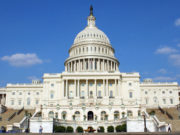A Second Circuit Court panel ruled today against the plaintiffs in Vermont Right to Life v. Sorrell. The court ruled:
Although some courts have held that the creation of separate bank accounts is by itself sufficient to treat the entity as an independent‐expenditure‐only group, see, e.g.,Emily’s List v. Fed. Election Comm’n, 581 F.3d 1, 12 (D.C. Cir. 2009),21 we do not believe that is enough to ensure there is a lack of ““prearrangement and coordination.” A separate bank account may be relevant, but it does not prevent coordinated expenditures – whereby funds are spent in coordination with the candidate. See Stop This Insanity, Inc. Emp. Leadership Fund v. Fed. Election Comm’n, 902 F. Supp. 2d 23, 43 (D.D.C. 2012). Nor is it enough to merely state in organizational documents that a group is an independent‐expenditure‐only group. Some actual organizational separation between the groups must exist to assure that the expenditures are in fact uncoordinated. We therefore decline to adopt the reasoning of the Fourth Circuit in NCRL III. There, the Fourth Circuit rejected North Carolina’s argument that NCRL‐FIPE (a similar organization to VRLC‐FIPE) was “not actually an independent expenditure committee because it [was] ‘closely intertwined’” with NCRL and NCRL‐PAC, two organizations (similar to VRLC and VRLC‐PC) that did not limit their activities to independent expenditures. NCRL III, 525 F.3d at 294 n.8. The Fourth Circuit concluded based only on NCRL‐FIPE’s organizational documents that the group was “independent as a matter of law.”22 Id. We do not agree that organizational documents alone satisfy the anti‐corruption concern with coordinated expenditures that may justify contribution limits.
The decision seems a bit bizarre. There is no limit on “coordination” between citizens’ groups. Groups X, Y, and Z are perfectly free to coordinate strategy to their hearts’ content. Coordination has never been deemed to apply in such a situation, and it would certainly be unconstitutional to deem such coordination illegal. Is this equation changed because Group X (but not Groups Y or Z) made a legal contribution to a candidate?
That’s a pretty tough road to hoe. Surely – I think – the mere fact that X PAC gave to Candidate Smith does not mean that Group Y cannot operate an IE PAC – even if Group Y has the same objectives as Group X, and even if Group Y talks with Group X about their shared goals and even election plans. The state would have to prove that Candidate Smith was using Group X to coordinate with Group Y – a factual determination. But the idea that you could simply prohibit Group Y from operating an independent expenditure PAC because it *might* coordinate with Candidate Smith through Group X seems off the rails.
Does this change because Group X and Y are organizationally related in some way? I think not. See Colorado Republican Federal Campaign Committee v. FEC (“Colorado Republican I”). In fact, it’s even McConnell v. FEC, the all-time favorite decision of “reformers,” which nonetheless held that Congress could not force political parties to choose between doing either independent expenditures or coordinated expenditures (i.e. contributions). Citizens United? We don’t need no stinkin’ Citizens United.
Now, the Court does note that VRTL chose not to contest the state’s evidentiary record showing the extent to which its independent expenditure PAC and its traditional PAC were intermeshed. But none of that record (at least not described in the Court of Appeals opinion) would actually show that any expenditures were coordinated with the campaign. Again, see Colorado Republican I. More importantly, so long as coordination is illegal, certainly organizations may be investigated for illegal coordination. But I don’t think that the law can presumptively hold that two organizations are coordinating. It’s got to be proven. Once again, that’s Colorado Republican I.
The Court seems to be relying not really on “coordination,” but on what the FEC calls “affiliation.” But affiliation rules never prohibited two affiliated PACs from each each making unlimited independent expenditures – they served only to assure that the two affiliated PACs did not exceed the contribution limit. (In other words, Berkshire-Hathaway can’t get around the $5000 PAC contribution limit by simply creating Berkshire Hathaway PAC I, B-H PAC II, B-H PAC III, etc.). But here there is no question of exceeding the contribution limit, and so long as the funds are kept separate, there is no danger of a donor using the independent expenditure PAC to exceed the contribution limit or of the independent expenditure PAC being used to get corporate or union contributions to the campaign.
Many people will applaud this decision because they disagree with the extensive precedent out there. They believe that much more regulation should be allowed than the Supreme Court has held is allowed by the Constitution. But as a matter of accurately understanding the law and precedent, the Second Circuit is in danger of becoming the Ninth Circuit of campaign finance law – a jurisdiction whose opinions are readily out of tune with other circuits and overruled by the Supreme Court.














